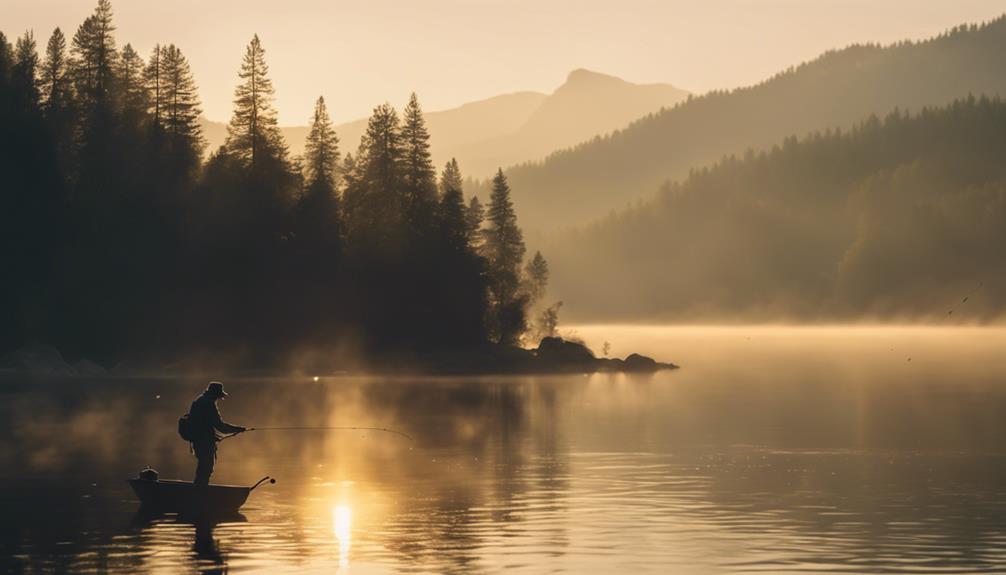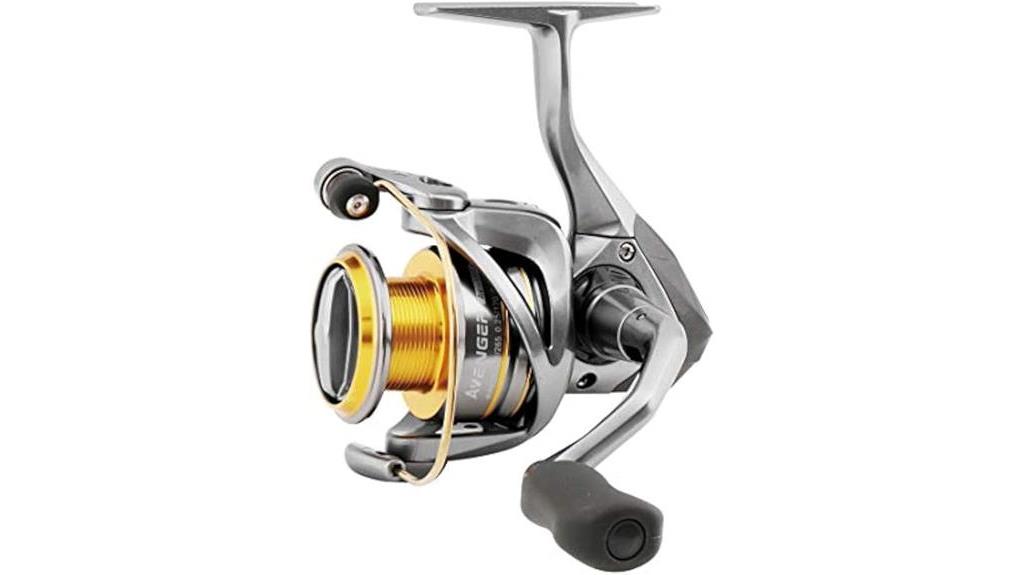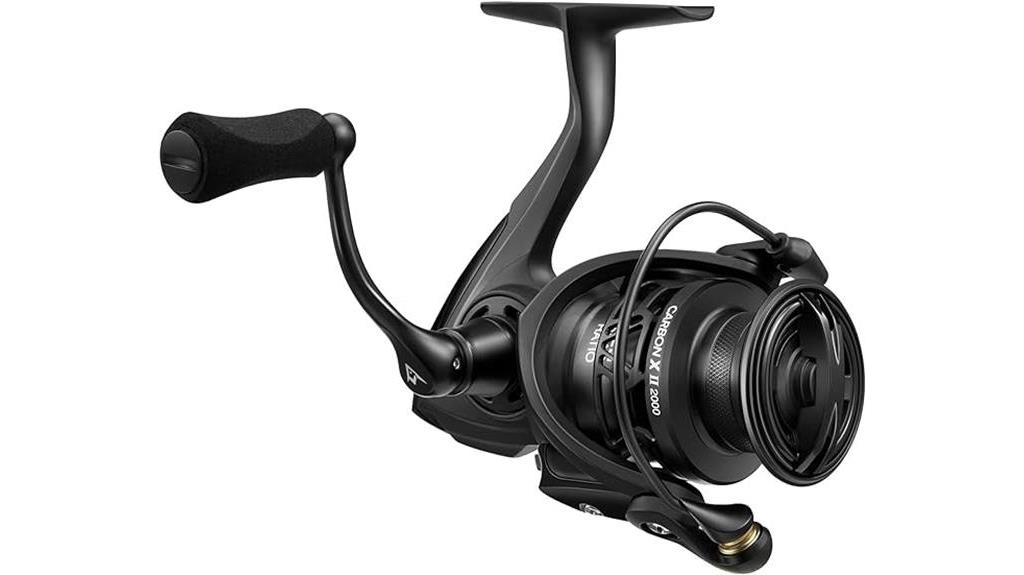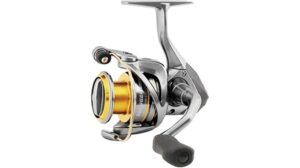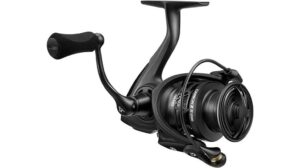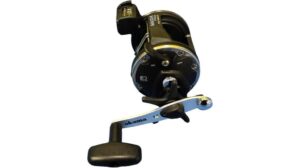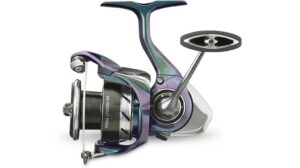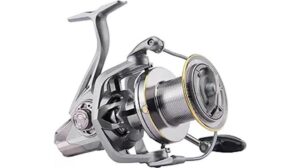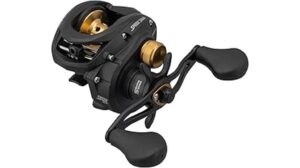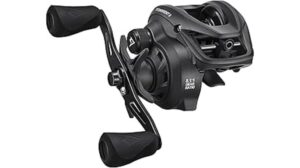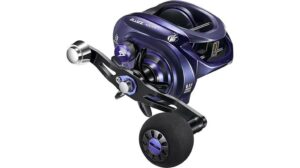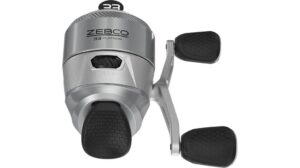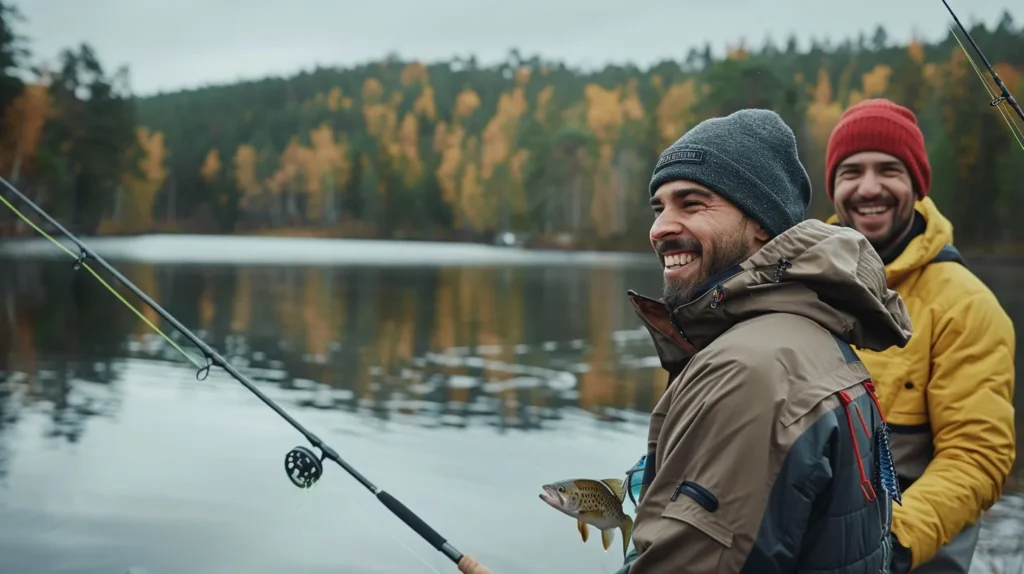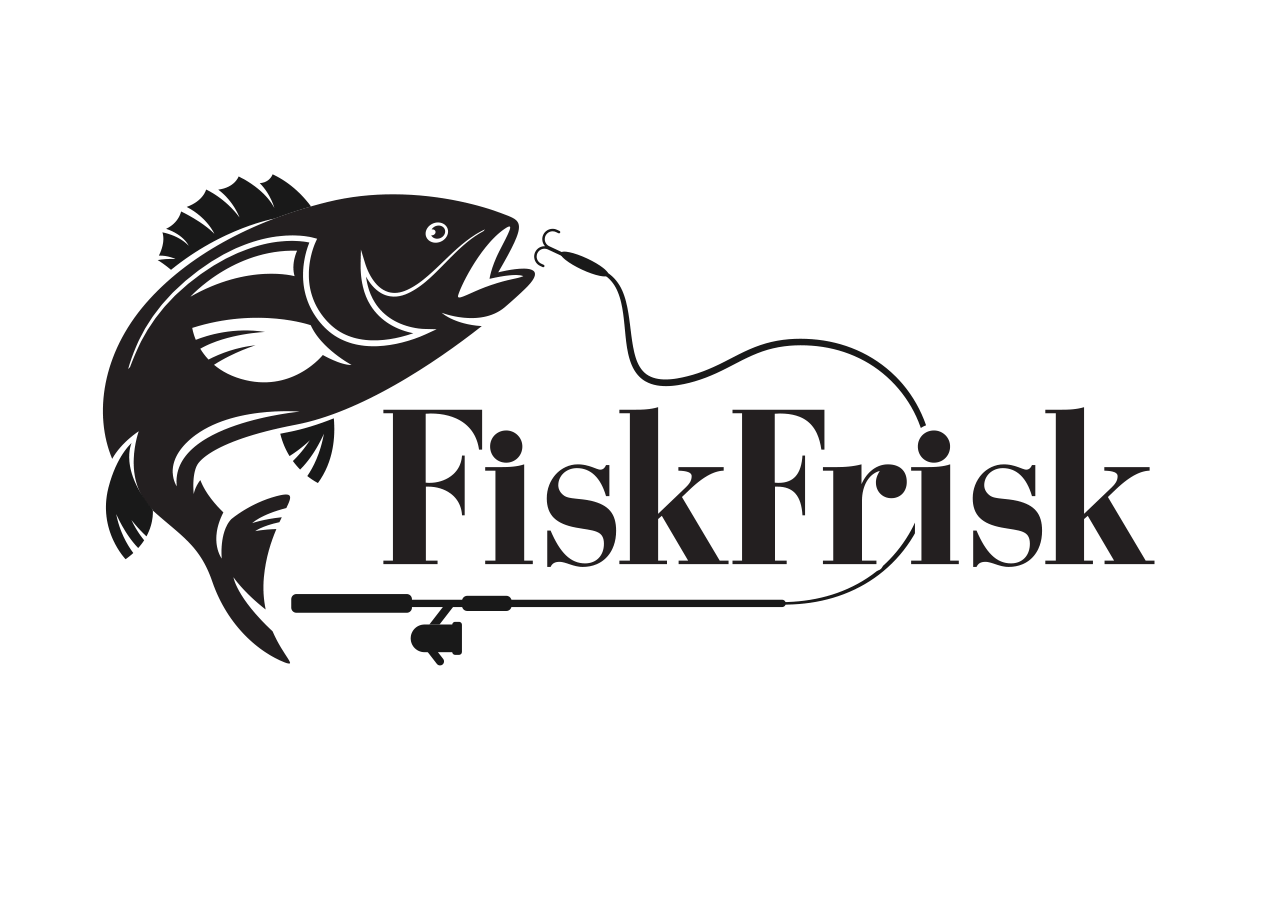The secrets to finding the perfect fishing spot lie in understanding fish behavior and their environment. We've discovered that key factors include seasonal changes, water temperature, and depth. Fish congregate around structures like submerged logs and rocky outcroppings. Baitfish presence is essential, as is recognizing the influence of currents and water flow. Time of day and weather patterns play significant roles in fish activity. We've found that leveraging local knowledge and reports, combined with modern technology and mapping tools, greatly enhances our chances of success. By mastering these elements, we've revealed the potential for exceptional angling experiences. The depths of this knowledge hold even more secrets for the curious angler.
Understanding Fish Behavior

To reveal the secrets of finding the perfect fishing spot, we must first investigate the fascinating world of fish behavior. We'll explore their habits, preferences, and instincts. Understanding how fish react to water temperature, light, and food sources is essential. We'll examine their migration patterns, spawning habits, and feeding times. This knowledge will help us predict where fish are likely to congregate, giving us an edge in our angling pursuits.
Seasonal Changes and Migration
Building on our understanding of fish behavior, we'll now explore how seasonal changes and migration patterns influence the perfect fishing spot. Seasonal shifts profoundly affect fish movements and behavior. To maximize our chances of success, we must consider:
- Water temperature fluctuations
- Spawning cycles
- Food availability
- Daylight duration
These factors drive fish to relocate, altering their feeding habits and preferred habitats throughout the year. By studying these patterns, we can anticipate where fish are likely to congregate during different seasons.
Water Temperature and Depth
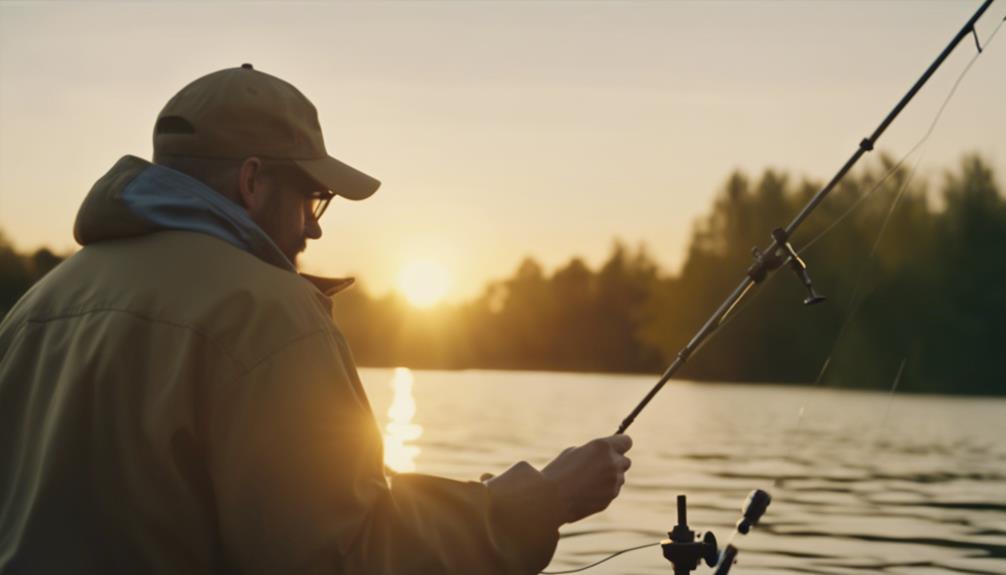
Water temperature and depth's influence on fish behavior cannot be overstated when searching for the perfect fishing spot. We've found that fish often seek out their preferred thermal zones, which vary by species. In warmer months, many fish retreat to cooler, deeper waters, while in colder seasons, they may move to shallower areas that warm up faster. Understanding these patterns is essential for success.
Structure and Cover
Beyond temperature considerations, fish are drawn to areas that provide both protection and hunting opportunities, which brings us to the essential role of structure and cover in selecting prime fishing locations. We've found that fish congregate around:
- Submerged logs and fallen trees
- Rocky outcroppings and ledges
- Aquatic vegetation and weed beds
- Man-made structures like docks and bridges
These features offer shelter and ambush points, making them ideal spots for our aquatic quarry.
Baitfish Presence
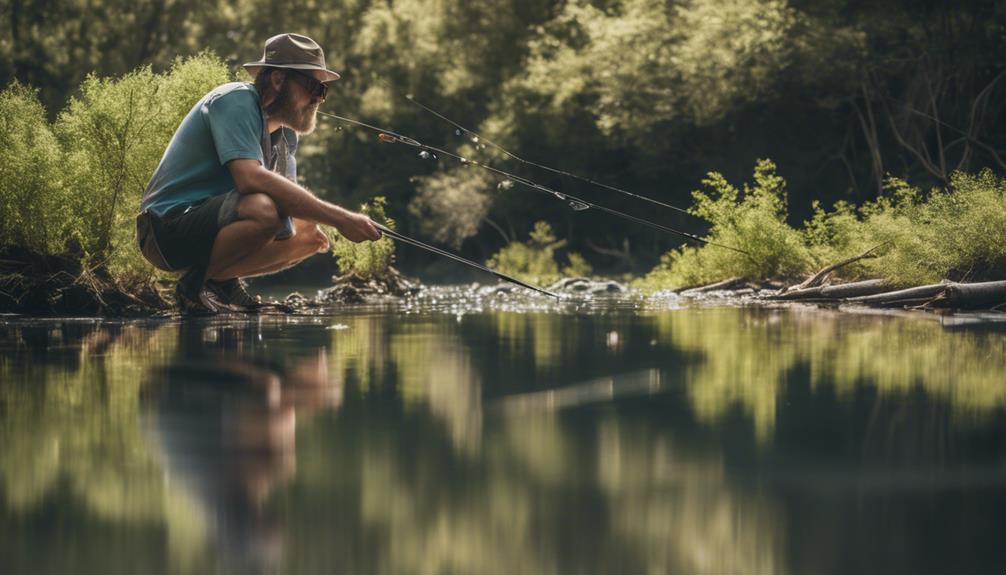
Identifying the presence of baitfish is essential for locating prime fishing spots, as predatory game fish are often found in close proximity to their food sources. We can observe surface activity, use fish finders, or look for diving birds to detect baitfish schools. Understanding the relationship between baitfish and game fish can considerably improve our chances of a successful catch.
| Baitfish Species | Preferred Habitat | Game Fish Attracted |
|---|---|---|
| Shad | Open water | Bass, Stripers |
| Minnows | Shallow areas | Trout, Panfish |
| Herring | Coastal waters | Salmon, Tuna |
| Anchovies | Estuaries | Redfish, Snook |
| Sardines | Pelagic zones | Mackerel, Tarpon |
Current and Water Flow
Currents and water flow patterns play a crucial role in determining prime fishing locations, as they influence the distribution of nutrients, oxygen, and prey species throughout aquatic ecosystems. When seeking the perfect spot, we should consider:
- Eddies and back currents
- Convergence zones
- Rip currents
- Tidal influences
These features create ideal habitats for fish, offering shelter, food, and oxygen-rich waters. Understanding how currents shape aquatic environments helps us pinpoint productive fishing areas with precision.
Oxygen Levels and Vegetation

In our quest for the perfect fishing spot, we mustn't overlook the critical roles that oxygen levels and aquatic vegetation play in sustaining thriving fish populations. These factors are intimately linked, with plants producing oxygen through photosynthesis and providing shelter for fish. We should seek areas with lush underwater gardens, as they're often teeming with life. Clear, well-oxygenated waters are a promising sign of a productive ecosystem.
Time of Day
Anglers who've honed their craft understand that the time of day can make or break a fishing expedition, influencing fish behavior and feeding patterns in profound ways. We've found that certain periods offer prime fishing opportunities:
- Dawn: Fish are active and feeding
- Late morning: Sunlight warms shallow waters
- Midday: Deep-water species become active
- Dusk: Another peak feeding time
Weather Patterns
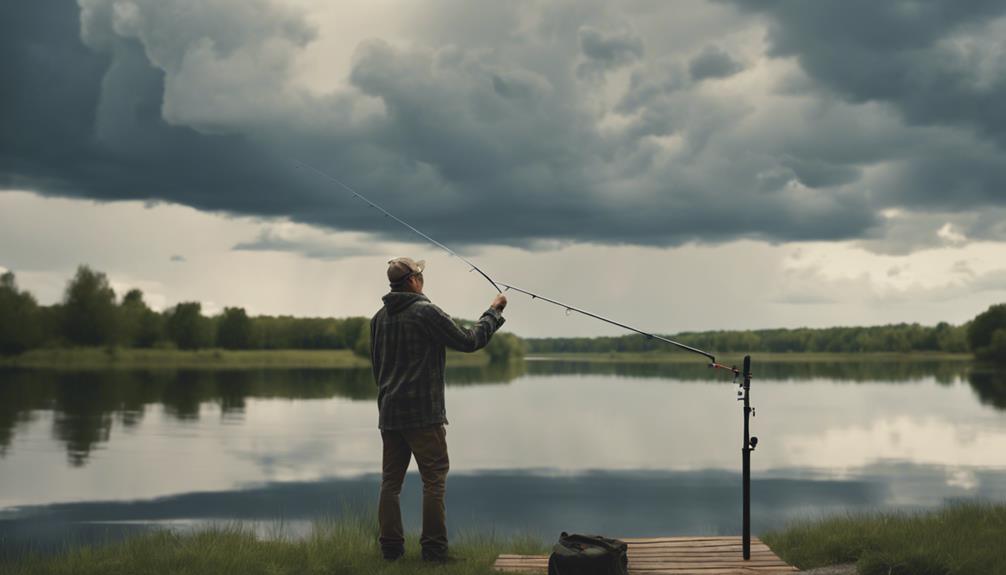
While the time of day plays a significant role, weather patterns are equally influential in determining the success of your fishing expedition. We've found that fish are highly sensitive to atmospheric changes. Barometric pressure, cloud cover, and wind direction all impact their behavior. Let's explore how these factors affect feeding patterns and fish movement, helping us pinpoint the ideal conditions for a bountiful catch.
Local Knowledge and Reports
Tapping into local knowledge and fishing reports can be a game-changer when searching for that perfect fishing spot. We can uncover hidden gems and increase our chances of success by:
- Chatting with local bait shop owners
- Joining regional fishing forums
- Consulting fishing guides
- Checking online fishing reports
These valuable resources provide intimate insights into current conditions, hotspots, and effective techniques, helping us make informed decisions about where to cast our lines.
Technology and Mapping Tools

Leveraging cutting-edge technology and mapping tools has revolutionized the way we locate prime fishing spots and analyze underwater terrain. We now have access to sophisticated sonar systems, GPS-enabled fish finders, and detailed bathymetric charts that reveal underwater structures and depth contours. These advanced tools allow us to pinpoint fish-holding areas, identify drop-offs, and track water temperature variations, considerably increasing our chances of a successful catch.
Conclusion
We've explored the multifaceted aspects of locating prime fishing spots, from understanding fish behavior to leveraging technology. By synthesizing these elements, we've revealed an all-encompassing approach to angling success. As we continue to refine our techniques, we're reminded that fishing is an ever-evolving pursuit. The perfect spot isn't just a location; it's a confluence of factors we've learned to interpret. Armed with this knowledge, we're poised to make every cast count.
